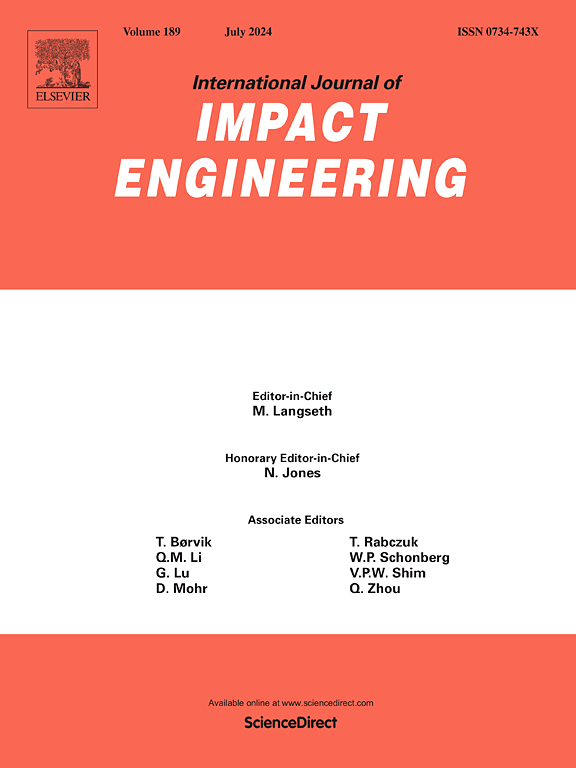设计和评估用于航天器的添加式制造聚醚酰亚胺轨道碎片防护装置
IF 5.1
2区 工程技术
Q1 ENGINEERING, MECHANICAL
International Journal of Impact Engineering
Pub Date : 2024-10-28
DOI:10.1016/j.ijimpeng.2024.105150
引用次数: 0
摘要
地球周围日益拥挤的轨道环境威胁着空间资产的安全。小于 1 厘米但以超高速飞行的微流星体和轨道碎片(MMOD)构成了严重但可防御的危险。传统的防护罩是在航天器组装过程中安装的,必须经得起发射载荷的考验,这就限制了防护罩的尺寸、形状以及最终的有效性。在轨快速成型制造技术的最新进展为防护罩的设计和部署创造了新的机遇。本研究介绍了加成制造聚醚酰亚胺防护罩的建模和测试。有限元代码 CTH 被用来模拟此类防护罩的超高速撞击(HVIs),尽管这些模型并不完美,但对防护罩的设计非常有用。在直径为 4 毫米的铝质弹丸以 5 - 6.5 千米/秒的速度撞击的情况下,使用两级轻型气枪对几种防护罩设计进行了加成制造和超高速撞击测试。所有设计都成功地经受住了高空滞留试验,这表明它们作为 MMOD 航天器屏蔽的潜在有效性。本文章由计算机程序翻译,如有差异,请以英文原文为准。
Design and evaluation of additively manufactured polyetherimide orbital debris shielding for spacecraft
The increasingly congested orbital environment around Earth threatens the safety of space assets. Micrometeoroids and orbital debris (MMOD) less than 1 cm but traveling at hypervelocities pose a serious but defensible hazard. Traditional shields are installed during spacecraft assembly and must survive launch loads, constraining their size, shape, and ultimately, effectiveness. Recent advances in on-orbit additive manufacturing have created new opportunities for shield design and deployment. This work describes the modeling and testing of additively manufactured polyetherimide shields. The finite element code CTH was used to model hypervelocity impacts (HVIs) of such shields, and though imperfect, the models were useful for shield design. Several shield designs were additively manufactured and underwent HVI testing with a two-stage light gas gun in the regime of 4 mm diameter aluminum projectile impacts at 5 - 6.5 km/s. All successfully survived the HVIs, indicating their potential effectiveness as MMOD spacecraft shielding.
求助全文
通过发布文献求助,成功后即可免费获取论文全文。
去求助
来源期刊

International Journal of Impact Engineering
工程技术-工程:机械
CiteScore
8.70
自引率
13.70%
发文量
241
审稿时长
52 days
期刊介绍:
The International Journal of Impact Engineering, established in 1983 publishes original research findings related to the response of structures, components and materials subjected to impact, blast and high-rate loading. Areas relevant to the journal encompass the following general topics and those associated with them:
-Behaviour and failure of structures and materials under impact and blast loading
-Systems for protection and absorption of impact and blast loading
-Terminal ballistics
-Dynamic behaviour and failure of materials including plasticity and fracture
-Stress waves
-Structural crashworthiness
-High-rate mechanical and forming processes
-Impact, blast and high-rate loading/measurement techniques and their applications
 求助内容:
求助内容: 应助结果提醒方式:
应助结果提醒方式:


